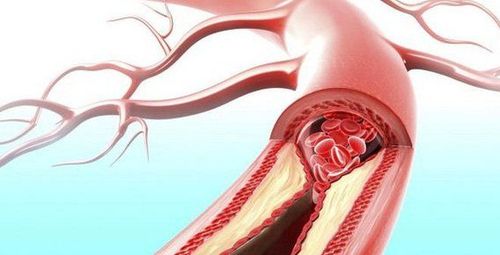This is an automatically translated article.
The article was professionally consulted by MSc Vu Thi Tuyet Mai - Cardiologist, Cardiology Center - Vinmec Central Park International General Hospital.Peripheral artery occlusion of the lower extremities is one of the serious diseases that not only affects health but also poses a risk of amputation necrosis, even death.
1. Lower extremity peripheral artery occlusion
Peripheral artery disease is one of the common circulatory disorders in which the arterial segments are narrowed and gradually completely blocked, leading to a decrease in blood flow to the lower extremities, resulting in loss of nourishment to the lower extremities. The claudication is most painful when walking.Peripheral artery occlusion can occur at any part of the vessel, but is most common in the arteries of the lower extremities. Lower extremity artery occlusion occurs because atherosclerotic plaques and thrombus adhere to the walls of blood vessels, thereby impeding blood circulation to lower areas of the body.
2. Causes of lower extremity peripheral artery occlusion
The disease is mainly caused by atherosclerotic plaques. Atherosclerosis not only causes occlusion of the arteries of the lower extremities, but also affects other parts of the body, especially the heart with large arteries. A thrombus can form in the blocked vessel or form in other vessels and move to block the vessel.90% of patients with peripheral artery occlusion of the lower extremities stem from cardiovascular diseases such as: arrhythmia, myocardial infarction, valvular disease, arterial aneurysm... In addition, the disease has May be caused by inflammation or damage to the lower extremities, anatomical abnormalities of ligaments or muscles, or exposure to radioactive substances.

People with obesity increase cholesterol accumulation in the blood vessels, increasing the risk of thrombosis. Older adults, especially after the age of 50. Family history of peripheral artery disease. Having a habit of smoking (the main risk factor for peripheral artery disease), regularly using stimulants such as alcohol, etc. Having medical diseases such as diabetes, high blood pressure, high blood cholesterol.
3. Clinical manifestations of lower extremity peripheral artery occlusion
Claudication: Pain in a muscle group or band characterized by pain that increases with movement, decreases or disappears immediately after rest. The pain is similar to pain when cramp or muscle spasm, the severity of the pain depends on the patient and the obstruction. The most common site of pain is calf pain. Narrowed or blocked arteries reduce nutrition to the surrounding muscles, causing muscle atrophy and subcutaneous fat, cold lower extremities, long-term ulceration in the distal areas that cannot be restored, pulse below the area. Weak obstruction even loss of rhythm, high risk of death. People who are tired, pale, may have a color disorder on the skin. Sensory disturbances in the lower extremities: Numbness, paresthesia, severe motor paralysis. Dry hair, easy to break, toenails and fingernails are also dry.
4. Complications of lower extremity peripheral artery occlusion
Complications of lower extremity peripheral artery disease:Lower extremity ischemia leads to muscle atrophy, paralysis, limb necrosis, the worst case is amputation. Abdominal aortic aneurysm or popliteal aneurysm due to obstruction of blood circulation. Affects cardiovascular and other organs in the body. Peripheral artery occlusion of the lower extremities is a dangerous disease, especially in the case of acute occlusion, requiring urgent revascularization intervention in the first golden hours to reduce the rate of amputation and death. . Visit your doctor as soon as you have any abnormal body symptoms to avoid complications later.
Currently, Vinmec International General Hospital is the only medical unit equipped with a hybrid room system. Hybrid operating room at Cardiology Center is equipped with state-of-the-art equipment such as DSA angiography machine, anesthesia machine with the most closely integrated patient hemodynamic monitoring software (PiCCO system, entropy, . ..). Therefore, the Hybrid operating room can meet the requirements of surgery and angioplasty, coronary stenting, aortic stent graft, open heart surgery, heart valve replacement for congenital heart diseases with modern minimally invasive techniques. most invasive, safe, help patients recover health soon.
Master - Doctor Vu Thi Tuyet Mai has over 13 years of experience in the diagnosis and treatment of cardiovascular diseases. The doctor has participated in training courses at home and abroad at the University of Medicine and Pharmacy in Ho Chi Minh City. Ho Chi Minh City, NTUH National Taiwan University Hospital, The Prince Charles Hospital, Australia,..
Please dial HOTLINE for more information or register for an appointment HERE. Download MyVinmec app to make appointments faster and to manage your bookings easily.














